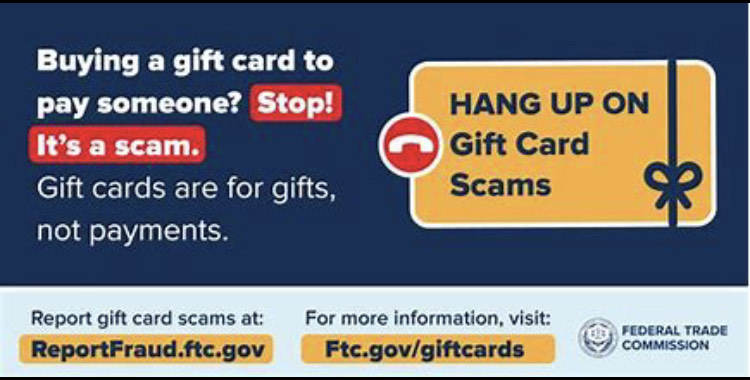
Trends in Gift Card Fraud Summary Fraud continues to be a significant area of focus across the global payments industry. The surge of cybercrime that started during the pandemic has persisted and continues to evolve, spilling across channels and geographies. Bad actors have evolved their techniques over time from victim assisted fraud (e.g., elderly gift card scams/extortion), to digital attacks online (e.g., cyberattack, account takeovers, online criminal activity), and more recently to gift card tampering.
The gift card industry has successfully adapted to each of these threats by increasing customer awareness, improving cybersecurity measures, updating packaging standards, and working with law enforcement around the prosecution of criminals. Gift Card Online Criminal Activity As mentioned above, digital attacks online for gift cards are not new. Companies and law enforcement are vigilantly working to keep customers safe by investigating and prosecuting bad actors. Below is a snippet of how Homeland Security Investigations successfully prosecuted the owner and administrator of America’s largest online gift card marketplace.
In 2022, a federal grand jury returned a six-count indictment charging Richard Verret, age 40, of Quebec, Canada, with unauthorized solicitation of access devices and trafficking counterfeit access devices, the result of a multi-year investigation into Verret’s online criminal activity. According to the indictment, Verret operated and controlled several websites through which he advertised the sale of gift cards for major restaurant chains, grocery stores, entertainment venues, and other retail business chains (collectively, the “businesses”). The indictment further alleges that Verret would obtain, by fraudulent methods and theft, large quantities of valid gift card account numbers. Because the account numbers could be loaded into mobile applications and scanned at store registers, used for online purchases, and/or re- programmed onto blank access devices, Verret and others could access the account balances and spend the funds without ever having actual, physical possession of the original, legitimate gift cards. Using various methods to conceal his identity and avoid detection, Verret would sell the account numbers over the internet, offering the numbers for sale at steep discounts.
As the indictment alleges, Verret’s websites advertised that they offered gift cards to hundreds of different businesses and that the sites were adding more gift cards “every week.” Most of these businesses were predominantly made up of the food service industry. As of late February 2022, one of the websites offered more than 550,000 gift cards to more than 500 different businesses. The total stored value of all the fraudulently obtained accounts offered for sale was more than $22 million. Gift Card Tampering is Increasing Recent trends indicate that Gift Card tampering is emerging as a new and accelerating dimension of the greater Organized Retail Crime (ORC) phenomenon across North America. Card Tampering is being addressed aggressively through collaboration across retailers, brands, distributors, and law enforcement. Industry leaders are working with Homeland Security Investigations (HSI) to identify mechanisms to disrupt this activity immediately and protect the Gift Card Industry against fraudsters through both taking preventative measures and ensuring the successful prosecution of perpetrators. What is Card Tampering: Card Tampering is the act of compromising a gift card package to steal the sensitive card information and then placing the package back into retailers to be sold to consumers. Once the gift card is loaded at the point of sale, the fraudsters steal the funds from the card. Card Tampering is directly related to ORC and much broader organized crime rings and national security concerns.
Quick Facts
- The fraudsters are targeting brands that can be redeemed for high-value products or other items that can be liquidated on digital marketplaces or shipped overseas to be resold.
- Large retailers with many stores are primary targets. Cards tend to be taken from smaller stores and placed in high traffic locations that turn inventory quickly.
- Card Tampering is accelerating quickly but is showing regional concentration.
- Many brands and retailers have taken preventative and protective measures via secure packaging, and other technology-based solutions, but these fraudsters adapt quickly and need to be stopped through consistent collaboration with law enforcement. One of the challenges retailers and brands are currently facing is the lack of a consistent and clear path to the prosecution of Card Tampering criminals. This is largely due to two factors:
- Local law enforcement needs to be further educated regarding Card Tampering and recognize its tie to broader Organized Retail Crime and national and/or international fraud rings.
- Because gift cards have no funds loaded throughout most of the “act of card tampering,” there has been a lack of clarity on what these criminals could and should be charged with when they are caught in the act.
